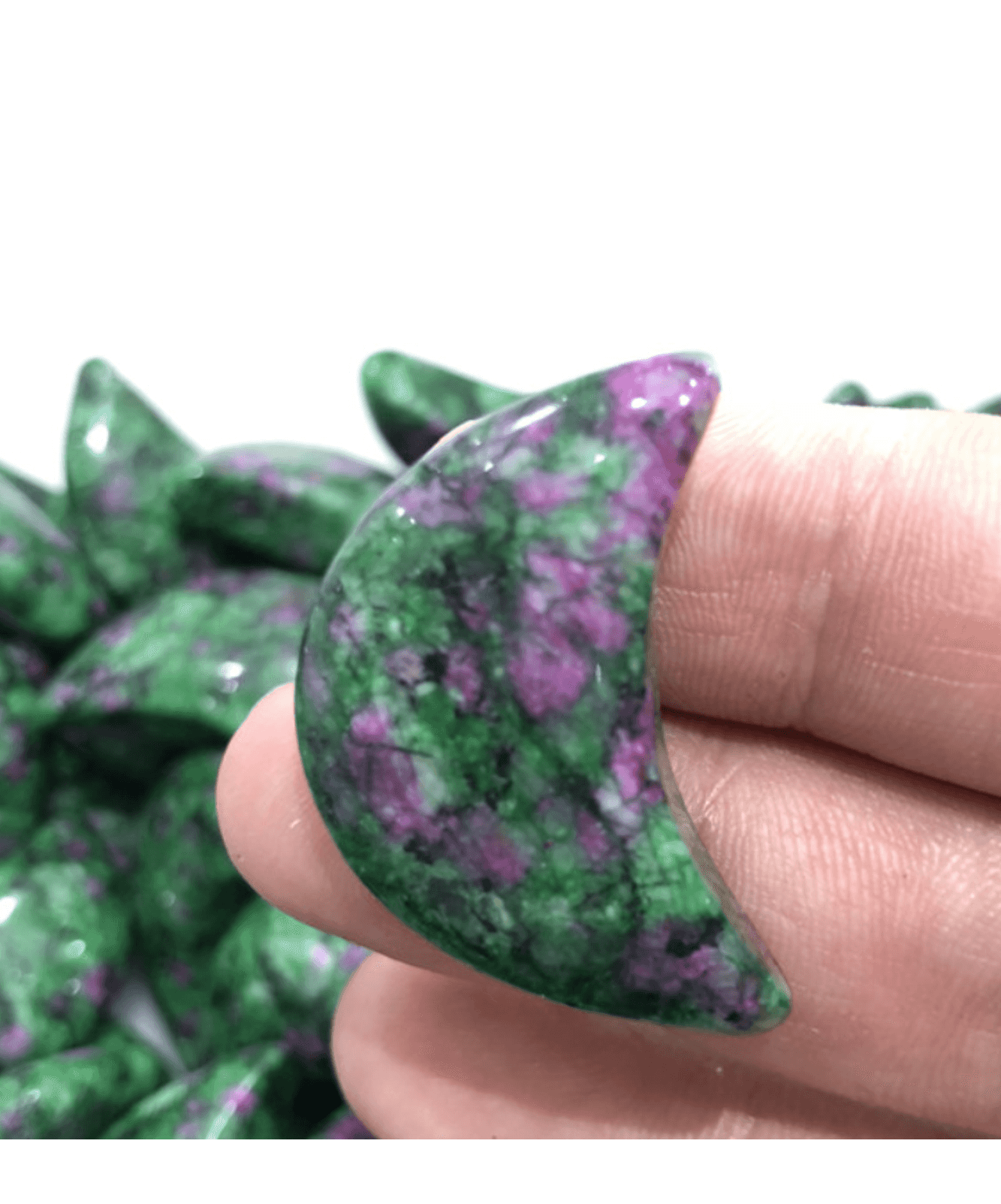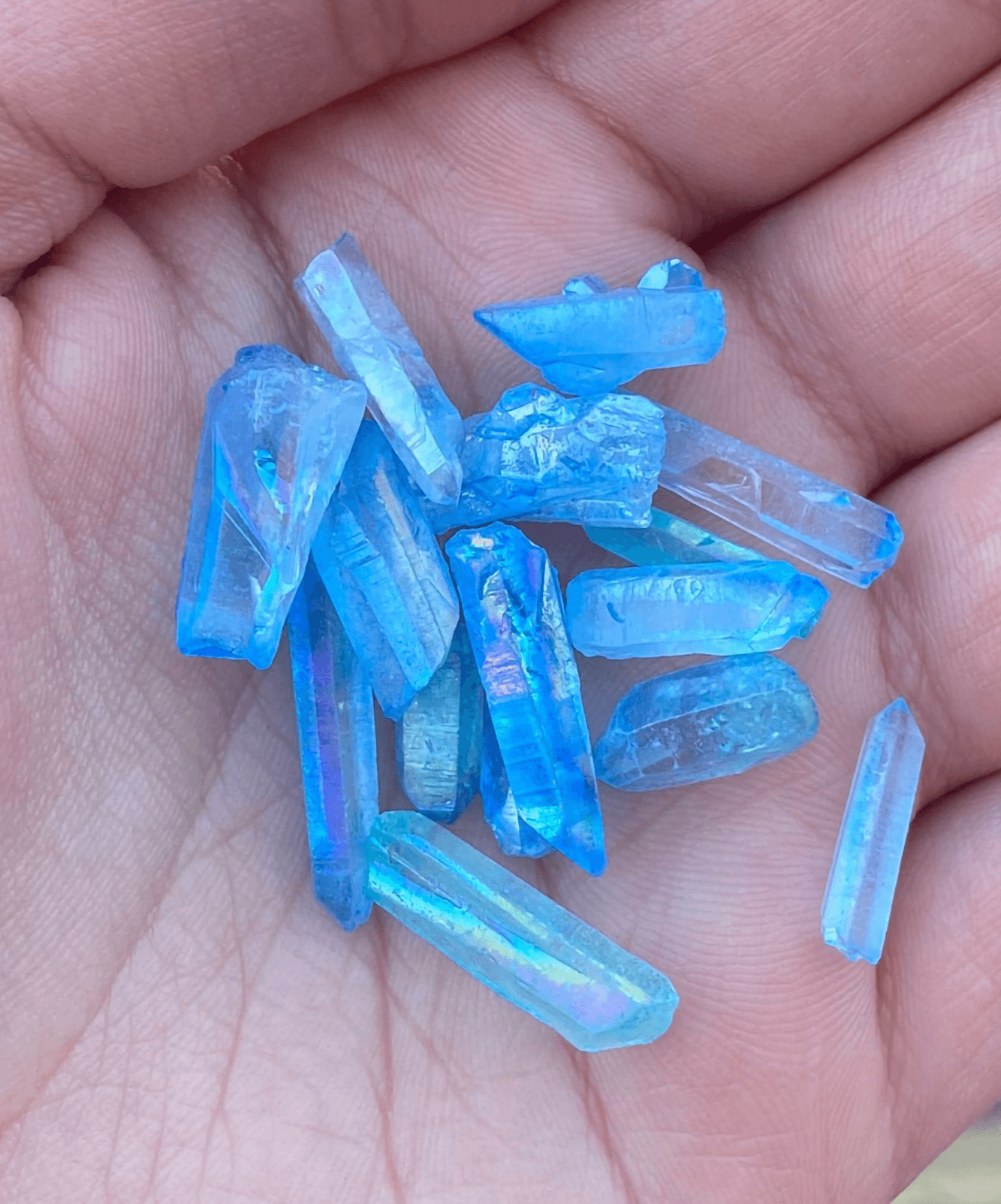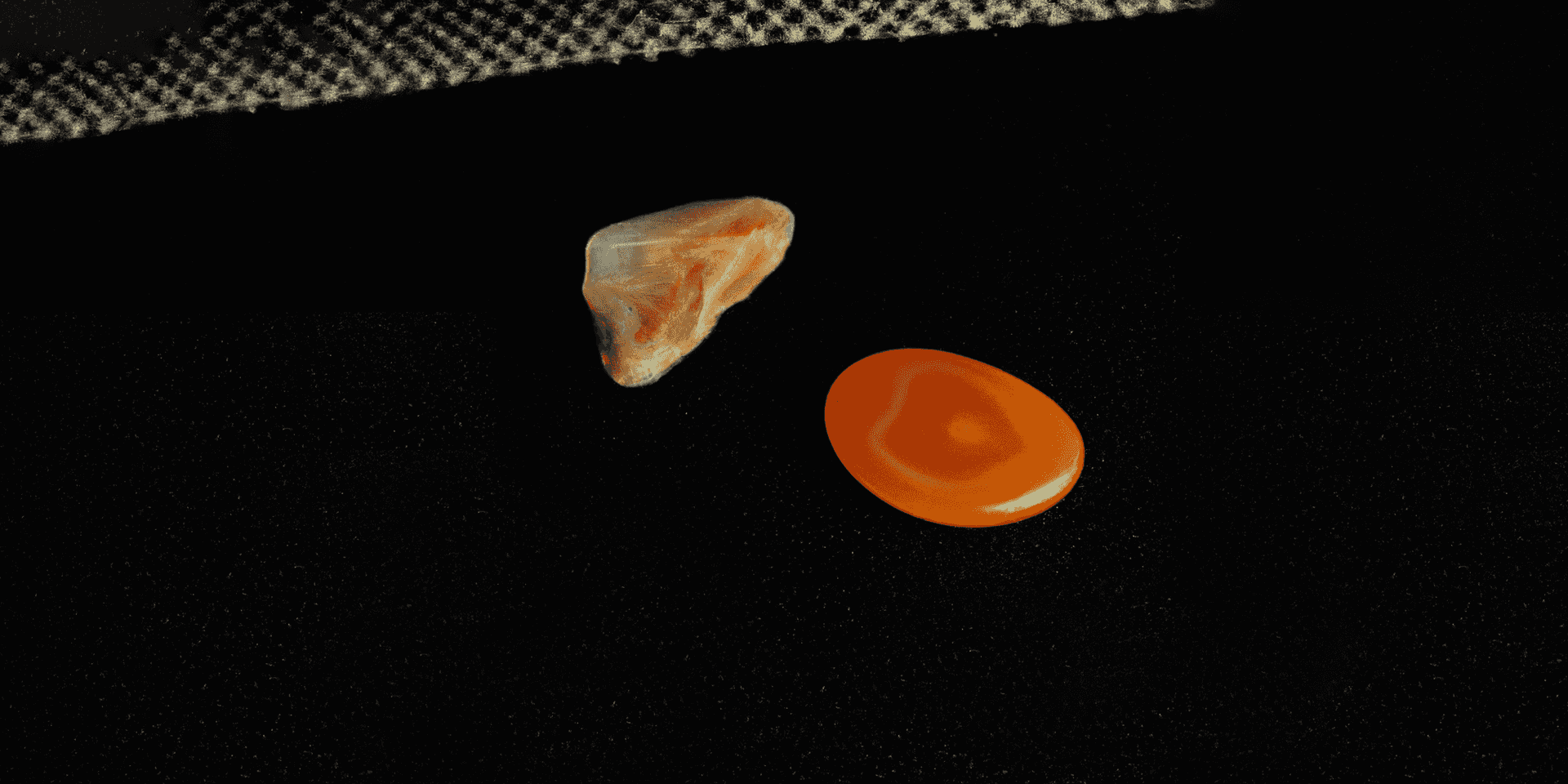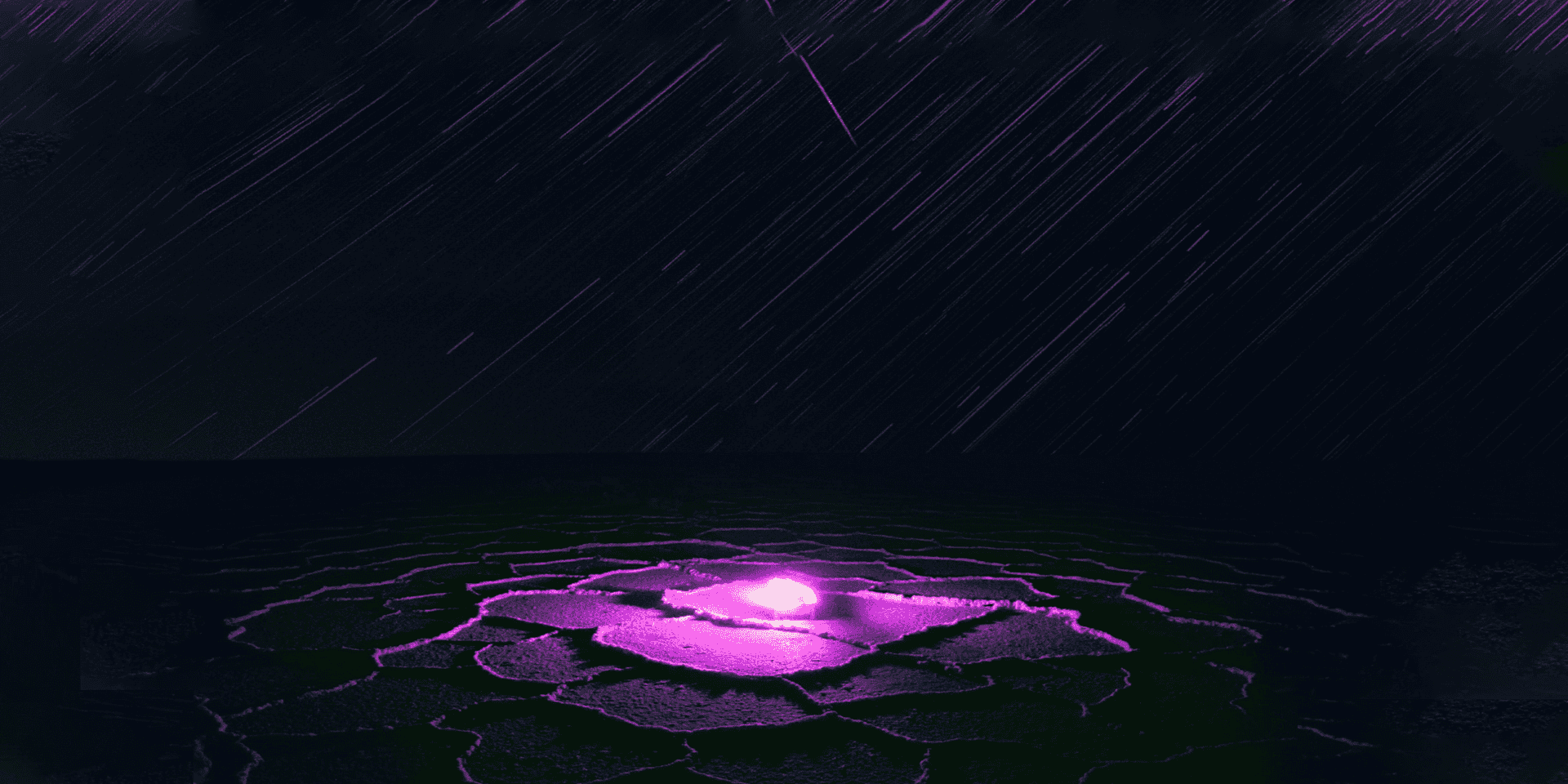
Zoisite
Nulla
Quick Look:
Third Eye, Heart, and Root Chakra
Colorless, white, yellow, brown, blue, green, red, pink, lavender-blue
Long prismatic columns of crystals with a smooth glassy texture
2 / 10 Rarity
Discovered in Discovered in the Sau-Alp Mountains of Austria in late 1805
Mined in Austria,Tanzania, India, Madagascar, Russia, Sri Lanka, Cambodia, Kenya
Chinese name: 黝簾石
General Care for Zoisite
Despite being a crystal, Zoisite is not particulary hard.
It only has a rank 6 - 6.5 on the Mohs scale of mineral hardness, which will be softer than most gemstones in your collection.
We recommend you keep from throwing this stone in a box or bag with others. Mixing them will damage your rock.
If you haven't cared for your tumbled Zoisite crystal for a long time, it may look a bit dull.
That's because it's sad you haven't held it in a long time.
Oh, and because it needs to be cleaned.
How To Clean Your Crystal
Follow the steps below, and your Zoisite stone look like new again.
- Fill a small bowl with warm water.
- Add a small amount of organic soap to the water and mix.
- Soak your crystal in the cleaning solution.
- Using a clean, soft bristle toothbrush, gently scrub the rock.
- Rinse the stone well under warm water and gently dry with a soft cloth.
If you want to go a give your Zoisite crystal an extra shine, then you can soak it in vinegar.
Yes. Vinegar. Really.
We love to use vinegar to shine our crystals. It helps remove any calcium carbonite that's on the surface.
You should only do this on crystals that aren't sensitive to chemicals.
Luckily, Zoisite is very resistant to both chemical and physical damage.
Will It Fade?
It depends on which color we're talking about.
If your Zoisite crystal is a dark color, like Tanzanite, then you have nothing to worry about.
But if you have a light colored gem then it's reasonable to worry about it becoming a transparent stone...
The only colors of Zoisite that are known to have a fading color property are the yellow, "colorless", and white varierty.
How to Charge Zoisite
Charging your Zoisite gem is as simple as placing it on a selenite charging plate or letting it bathe in direct moonlight for several hours.
This stone also responds to being buried in salt for 24 hours.
If you want to avoid an extra physical cleaning session, be sure to use a cloth bag or natural covering to prevent salt from falling into your stone's cracks. Or, give your stone a quick wash once it's charged!
Check If Your Crystal Is Real
The most basic check: is the seller trying to sell you a cheap Tanzanite? If so, that's probably not a Zoisite crystal.
Real Zoisite stones come in a wide range of colors, but aren't that likely to be faked outside of one color -- blue.
Due to Tanzanite's scarcity and price, this gemstone is a common target for fakes.
Faking a Zoisite stone in general is not easy, and you can quickly check if your stone is real or not through a couple of tests.
Fake Zoisite is typically made from Lead Glass, which has an uncanny resemblance to real Zoisite stone.
THE FOG TEST
If you’re looking at a Zoisite mineral and want to confirm it’s authenticity, just breath on it for a moment.
Yes, it sounds strange... but it works.
For real Zoisite, the fog from your breath will evaporate almost instanstly (~1 second). But if it’s fake, it may take 5 seconds or more to even start evaporating.
By doing the fog test, we’re exploiting the fact that fake Zoisite is almost always glass (never Resin), which holds moisture better than the real stone.
BUBBLES
We can continue to exploit the properties of glass, by searching for bubbles in the “gemstone”.
Look closely at the Zoisite and see if you can spot any bubbles inside. Not inclusions, but bubbles.
These are actually pockets of air that are trapped during the creation of the glass. Proving the "gemstone" is not actually a gem.
It’s almost impossible to make a glass gem without any air pockets inside, though you may need a magnifying glass as the bubbles will be tiny.
Zoisite Properties
Healing Properties
Zoisite transmutes negative energies into positive ones and connects us to the spiritual realms.
- Psychologically
This gem assists in manifesting your true self rather than being influenced by others or trying to conform to society's norm.
It aids in realizing your own ideas and transforms destructive urges into constructive ones.
This stone dispels lethargy and brings to the surface repressed feelings and emotions so that they can be expressed.
- Mentally
Zoisite is a creative stone, bringing the mind back to its objectives after an interruption.
- Physically
This gemstone encourages recovery from severe illness or stress.
Physical Properties
Zoisite technically belongs to a group of minerals called epidote, meaning it is a calcium aluminium hydroxy sorosilicate. It grows in a orthorhombic system, crystals in this system are characertized by their three mutually perpendicular axes that are all different lengths.
All varieties of zoisite share this orthorhombic crystalline structure.
I say "all varieties" because this mineral group comes in a lot of different flavors.
The most famous Zoisite is Tanzanite — a rare deep blue gem from Tanzania.
If you've ever mixed up Tanzanite and Sapphire, we don't blame you. They look very very similar.
But, Sapphire and Tanzanite are not the same crystals. Tanzanite is more rare than Sapphire, but is also less expensive.
This is because of branding.
Sapphire has a history in royalty whereas Tanzanite does not.
While the deep blue-purple of Tanzanite is the most rare color variety, there are many different varieties of this stone.
You can find Zoisite stones that are white, yellow, brown, blue, green, red, pink, and lavender-blue.
Name a color, and you can find a pretty stone to match.
All of the stones in this mineral group have the chance to display a Cat's eye effect.
Cat's eye Zoisite contains tiny, parallel inclusions, that give off a strong catseye effect with enough polish.
Rarity
Accurately answering the question of "How rare is Zoisite?" is difficult because it all depends on the which color we're talking about.
The more intense the color is of the gemstone, the more valuable it is. But it's not just about what colors are present.
Which type of Zoisite the gem is makes a huge difference. Loose green stone might only cost $1 per carat.
If that same stone was the blue-purple variety called Tanzanite then you're looking at $300 per carat.
Gems larger than 2c that have no inclusions can cost $500+ per carat, depending on how deep their color is.
And yet, despite this steep price, Tanzanite is still cheaper and more beautiful than Sapphire.
If you're after a red Zoisite crystal, or another uncommon color, then you can expect a range of $5 - $50 per carat.





